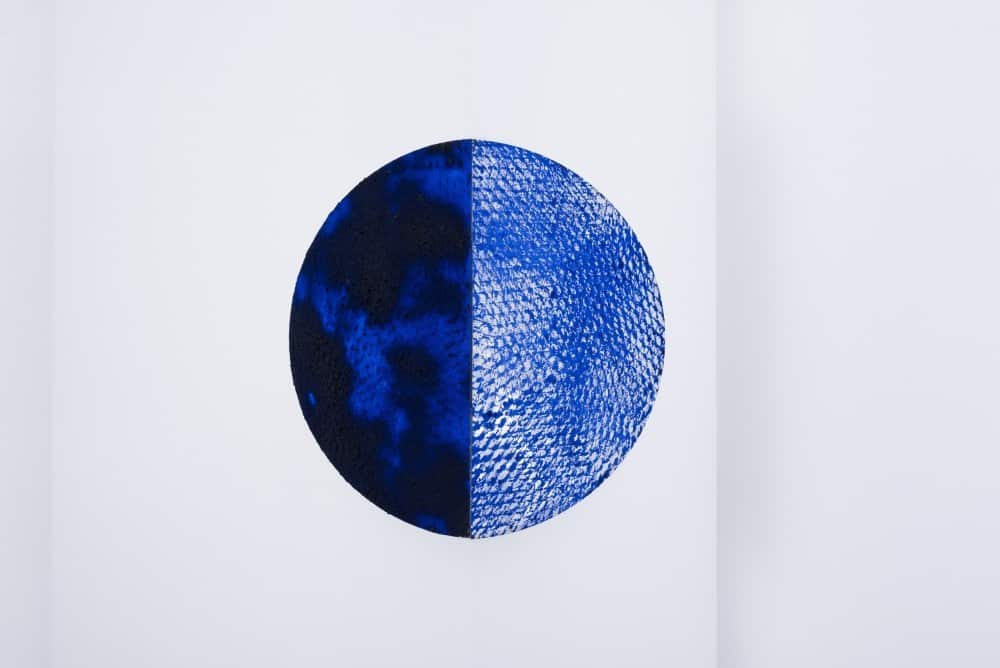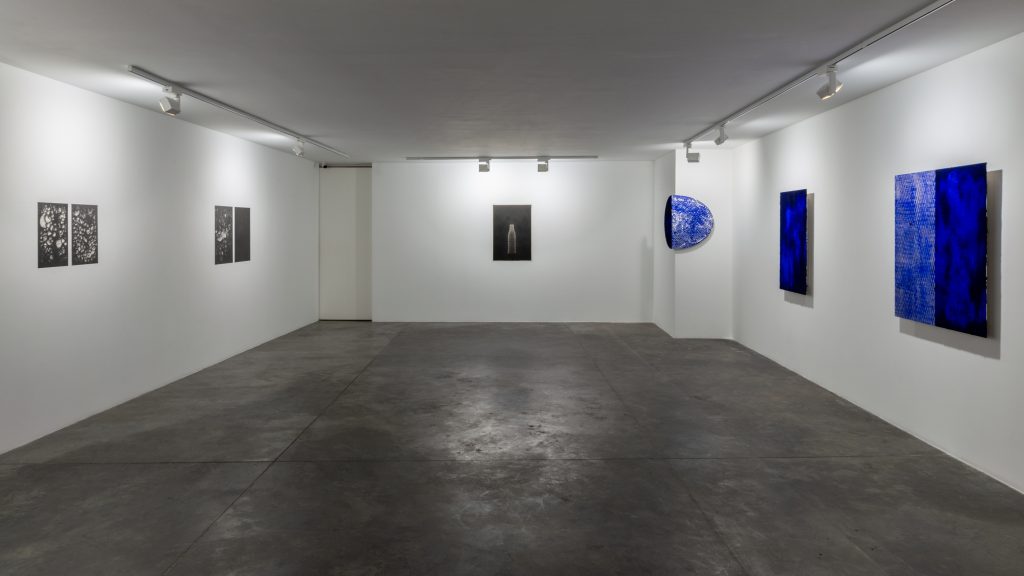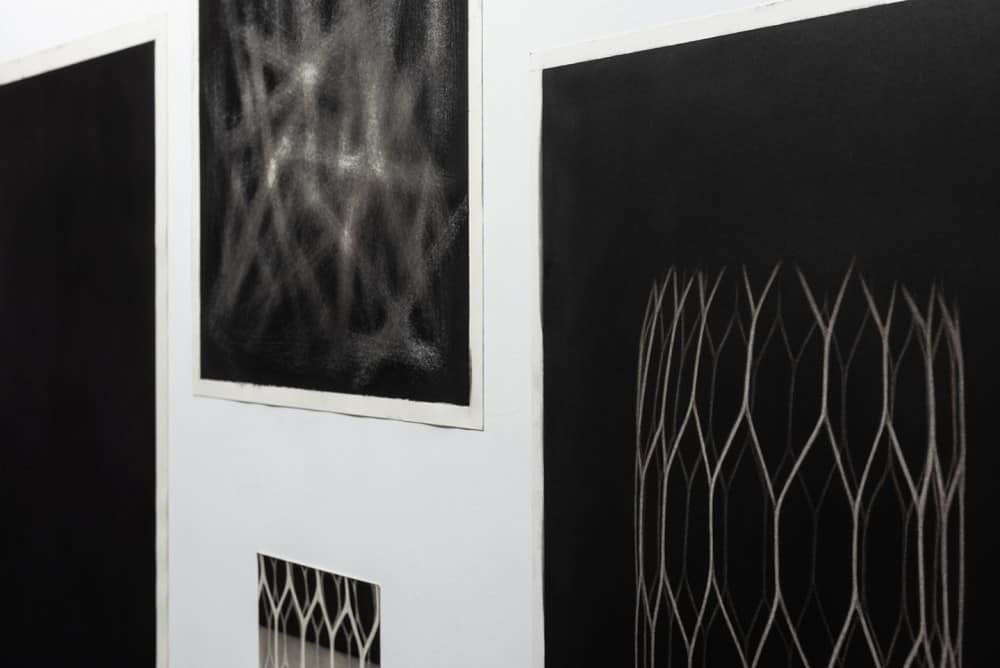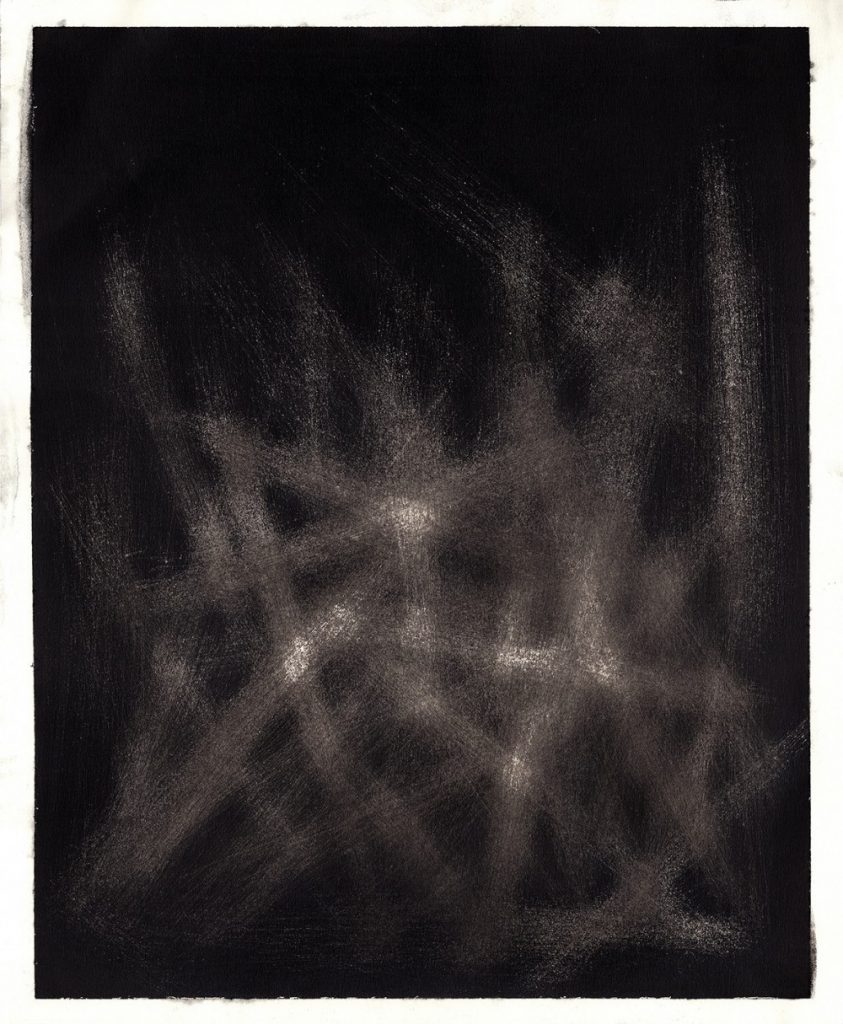25 October – 1 December, 2019
Artists: Yunus Emre Erdoğan, Clemes Wolf
Curator: Domenico de Chirico
“With power to expand into infinity,
Like amber and incense, musk, benzoin,
That sing the ecstasy of the soul and senses.” -Baudelaire

Sanatorium is currently hosting a unique and poetic exhibition whose name is derived from the poem “Correspondences” by French poet Baudelaire. I was lucky enough to get the chance to explore the exhibition a little deeper. We got together with the artist, Yunus Emre Erdoğan, whose grand devotion and engaging ideas allowed me to gain a broader perception of his work.
Firstly, let’s introduce the curator and his work on “Correspondences”. Domenico de Chirico is a successful, Italian curator who also lectures on Visual Culture. His latest curation, “Correspondences”, is stripped-down and spacey. I believe what is at question is the space itself and the empty areas which expand it. There is an aesthetic aspect to the space itself, both in terms of the curation and the artworks. Chirico makes it impossible for the spectator to experience the exhibition twice from the same point of view. This is the result of the spaciousness of the curation and the ghostly, spaceless sensations sprawling from the art works in unison. This encourages the spectator to wander around in their own sensorial mind-space as well. Both Erdoğan and Wolf focus on the form itself. Therefore, in “Correspondences”, Chirico might be attempting to formulate an artistic culture of the two artists by combining their works together via their formative resemblance and the harmony they produce and create with one another. It also indicates the similar problematics of the works individually. While Clemens Wolf’s works are interesting in capturing moments that cannot recur again and Yunus Emre Erdoğan is invested in the structuring of the spatial void, the two artists create a rare third space through their correspondence. They are in a poetic communication without syllables.

Clemens Wolf is an international artist and former parachutist who studies urban spaces through the use of constructions, parachute materials, wind, dye and metals. In “Correspondences”, he directs his focus on interior space and the paint itself. He uses color pigments in his elegant, conceptual paintings and correlates with tissue and patterns. He creates an evaporating effect within a firm space and produces the unattainable. His illusions through his blue corner paintings, entice immensity with aesthetic intensity. He reveals the very core of the plastic arts through the usage of color pigments. Moreover, this is where two artists connect: Whereas Erdoğan minimizes the tools and reduces them into charcoal pencil and color grey and Wolf uses pigments and flashy yet suiting tones of blue and grey, both artists question the essence of their works within the works themselves. The spirit of light, shadow, color and temporary visions produces a metaphysical atmosphere.
Wolf’s corner paintings invite the spectator to correlate with the artwork through playing with the vision, as the shape of the paintings shift according to where one stands. The illusionary and optic works are geometrical. The sphere and triangle corner works combine flavors of minimalism with op art. While I was experiencing the sphere corner painting, I felt as though I was under the gaze of a planet and something akin to that sense of fascination and terror that is produced by the vast beauties in nature. The lyrics from Space Oddity, “The Planet Earth is blue and there is nothing I can do…” started to play in my mind space.

Yunus Emre Erdoğan studies space, objects and light with fusion (charcoal pencil) on paper. His focus is on mundane objects and their nonobjective fractions. Utility, light, shadow, details, void, spacelessness and what lie beyond all those things are the main subjects of his artworks. He questions and reduces, perhaps even sacrifices, the boundaries and limitations of his objects and his art in order to deepen his search for the structuring of the spatial void. In this pursuit, he reduces the standard facilitators of art, such as paint, frame, and color. The works are in meditation with themselves and some are broken into their own pieces and zoomed in. Where one might almost find the DNA of the mundane materials in the perfection of realistic drawings. However, even though Yunus Emre Erdoğan is known for his neat hyper-realist talent, in “Correspondences”, he questions the notion of perfection, too. His focus is not on the perfection of the works but in cracking the limitations of the absolute truths. Therefore, some of his works are more aggressive or untidy compared to those previous. He too describes their feeling in association with the poem “Sol Elim” by the famous Turkish poet Orhan Veli Kanık. Since the practice of the imperfection needs surrendering and defenselessness, the sentiments become fearsome and darker. This is one of the moments where ecstasy of the soul, beauty and connection/correspondence are experienced. Throughout the exhibition, both Erdoğan and Wolf offer their authentic parts from their experiences on grasping the glimpses of the unknown and intangible. The curator, Chirico, meanwhile, leaves the space open for the spectator to participate within.

I believe we need more exhibitions like “Correspondences” in our hyper materialistic world and to experience our authentic moments through ontological questioning. In the inspirational poem which serves as the inspiration for the exhibition, Baudelaire, too, describes this belief touchingly:
Correspondences
Nature is a temple in which living pillars
Sometimes give voice to confused words;
Man passes there through forests of symbols
Which look at him with understanding eyes.
Like prolonged echoes mingling in the distance
In a deep and tenebrous unity,
Vast as the dark of night and as the light of day,
Perfumes, sounds, and colors correspond.
There are perfumes as cool as the flesh of children,
Sweet as oboes, green as meadows—
And others are corrupt, and rich, triumphant,
With power to expand into infinity,
Like amber and incense, musk, benzoin,
That sing the ecstasy of the soul and senses.
“Correspondences” can be seen at Sanatorium until December 1.
For more information visit the official gallery page. Also, read our review of Yunus Emre Erdoğan’s previous exhibition “Horizon of Things”.
Images courtesy of the artists.









